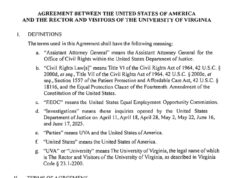by Andy Schmookler
Lowell concluded a recent piece — “Apoplectic” “right-wingers in Virginia… using the COVID-19 pandemic as an excuse to throttle or delay… needed reform — with a very important observation:
Unsurprisingly, it’s a broken record, and one we’ve all heard before – many times. Of course, that’s a big part of why the right wing’s messaging is often effective – they understand that a huge part of effective communications revolves around repetition, repetition, repetition. Sort of like how the right wingers have spent decades (falsely/dishonestly) bashing and demonizing “big government,” “job-killing regulations,” “tax-and-spend liberals,” “the liberal media,” etc.
Meanwhile…where has the Democrats’ and progressives’ messaging been exactly? Sad to say, it’s largely been erratic, ineffective, even AWOL. And – perhaps worst of all – sometimes Democrats have even adopted the right wingers’ egregious “framing,” instead of pushing back hard with progressive “framing” of our own. Not to mention the fact that the right wing has a vast messaging machine – radio, TV, print, social media – while Democrats and progressives have…??? Add that all up, and the right wing wins battles it should never have had a chance of winning. Let’s just hope that the next few weeks in Virginia aren’t one of those lost battles.
That observation brings us to an equally important next step: i.e. to figure our WHY the Democratic/liberal messaging has been weak and ineffective compared to that of the Republicans/the right.
One might have thought that those who have the truth on their side would have an advantage over those who deal continually in lies. But that has not been the case in America over the past generation.
Why is that?
(It also raises the additional question: Why is it that this question has not been the focus of more attention from the Democratic/liberal world?)
(I would propose that one part of the reality that Lowell notes — “Not to mention the fact that the right wing has a vast messaging machine – radio, TV, print, social media – while Democrats and progressives have…???” — should be examined as a separate inquiry. For the issue of the weakness of the messaging stands out more starkly for me than the comparative size of the megaphone to deliver the message.)
I hope that people here will have some good insights to share about the source (or sources) of the phenomenon — that has proved so dangerous to America — that Lowell observes.
Once we have a decent understanding of what underlies that weakness in how the Democratic side speaks to the American electorate, one might reasonably hope that we can address the question: How can/must the Democratic/liberal world change to fortify its ability to move the American electorate to reject the atrocity of a Republican Party we see today, and to entrust Democrats with the political power to move the nation in good directions?













